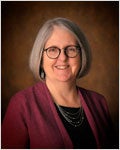How to Protect Children, Adults, and Healthcare Personnel from Measles
May 2019
| Technically Speaking | |
|
|
 |
|
|
|
|
|
| TECHNICALLY SPEAKING | |
| How to Protect Children, Adults, and Healthcare Personnel from Measles | |
| Published May 2019 | |
| In the U.S., we are currently experiencing measles outbreaks in 23 states, with 839 individual cases confirmed between January 1 and May 10, 2019. This is the greatest number of cases reported in the U.S. in a single year since 1994 and since measles was declared eliminated in 2000. Most of the people getting infected are unvaccinated.
Many vulnerable people in our communities are unvaccinated because they are too young for vaccination or have medical conditions like cancers and immune system disorders for which MMR vaccination is contraindicated. For their protection, these individuals must rely on those around them having high MMR vaccination coverage rates. We can help stop these outbreaks and heighten community immunity. Make sure your patients, their families, and healthcare personnel (HCP) are protected by following the measles vaccination recommendations of CDC’s Advisory Committee on Immunization Practices (ACIP), briefly described below. Protecting Children from Measles Two doses of MMR vaccine are routinely recommended for children. The first dose is given at age 12–15 months and the second dose at age 4–6 years. But instead of waiting until age 4–6 years, the second dose may be given as soon as 4 weeks (28 days) after the first dose and still be counted as a valid dose if both doses were given after the child’s first birthday. Giving the second dose as early as 4 weeks after the first dose should be considered in communities where measles is circulating. The second dose is not a booster, but rather is intended to produce immunity in the small number of people who fail to respond to the first dose. MMR vaccine may be administered to infants as young as age 6–11 months who are at high risk of exposure. This includes international travelers, as well as infants living in communities experiencing measles outbreaks. Consult your local or state health department to find out if this is recommended in your community. If you give a dose of MMR vaccine to an infant before the first birthday, it does not count as part of the routine 2-dose MMR series. The first dose should be repeated when the child is age 12 months. Protecting Adults from Measles For adults born before 1957 Adults born before 1957 can be assumed to be immune to measles. This includes international travelers and students, but it does not necessarily apply to healthcare personnel (HCP). Healthcare facilities should consider vaccinating unvaccinated HCP born before 1957 who do not have laboratory evidence of measles immunity, laboratory confirmation of disease, or vaccination with 2 appropriately spaced doses of MMR vaccine. CDC recommends that, during an outbreak of measles, healthcare facilities should recommend 2 doses of MMR vaccine at the appropriate interval for unvaccinated HCP who lack laboratory evidence of measles immunity, regardless of birth year. For adults born in 1957 or later Adults born in 1957 or later should receive at least 1 dose of MMR vaccine unless they have acceptable evidence of immunity (i.e., 1 documented dose of MMR or a measles-containing vaccine, laboratory evidence of immunity, or laboratory confirmation of disease). Certain adults born in 1957 or later may need 2 doses. Adults who are going to be in a setting that poses a high risk for measles transmission should make sure they have had 2 doses separated by at least 28 days. These adults include:
People who previously received a dose of MMR vaccine between 1963–1967 and are unsure which type of vaccine (live or inactivated measles vaccine) was used, or who are sure it was inactivated measles vaccine, should be revaccinated with either 1 dose (if low risk) or 2 doses (if high risk) of MMR vaccine. If a person born in 1957 or later has no documentation of MMR, you could check the patient’s blood for a measles titer; however, commercial tests currently available are not sensitive enough to reliably detect vaccine-induced immunity, leading to false negatives. In addition, this step will require an extra office visit and add to the cost. There is no harm in receiving 1 or 2 doses of MMR vaccine if a person is already immune to measles (or mumps or rubella). ACIP does not recommend testing for immunity after appropriate MMR vaccination. On May 17, CDC released a “Dear Provider” letter discussing what clinicians need to know about protecting adult patients from measles. During this time of outbreaks in so many states with case counts climbing week after week, it’s important to make sure your patients are protected from this highly contagious virus. References
|